Trek to Oregon's bewitching Umpqua Hot Springs offers quieter experience in winter
The journey began at a massive pile of gravel that had been poured across the road, forming the first of two barriers that also included a locked gate.
The message from officials was clear: “OK guys, this time we’re serious. You REALLY cannot drive your car beyond this point.”
I had to laugh.
If ever there was a place that required not one but two blockades to keep out vehicles, it would be Umpqua Hot Springs, the most bewitching and tormented place in all of Oregon.
Perfectly sized pools of steaming water sit on a cliff overlooking the North Umpqua River, in a forest of fir and incense cedar where bald eagles sometimes pass by.
Such idyllic soaking lures thousands of visitors during spring, summer and fall to the remote forest between Roseburg and Diamond Lake. It's an oft-busy place with a reputation for being both romantic and rowdy, populated by everyone from traveling yuppies to friendly naked hippies to, at least in the past, Manson family wannabes.
In winter, the U.S. Forest Service shuts down the final 2.5 miles of the road leading to the trailhead and begins a sort of “quiet season” at the hot springs. The gate is meant to prevent cars from getting stuck in the snow on the unplowed road. But after vandals kept breaking open the gate, leading to more people getting stuck, the Forest Service dropped a road-wide pile of gravel as a second barrier this season.
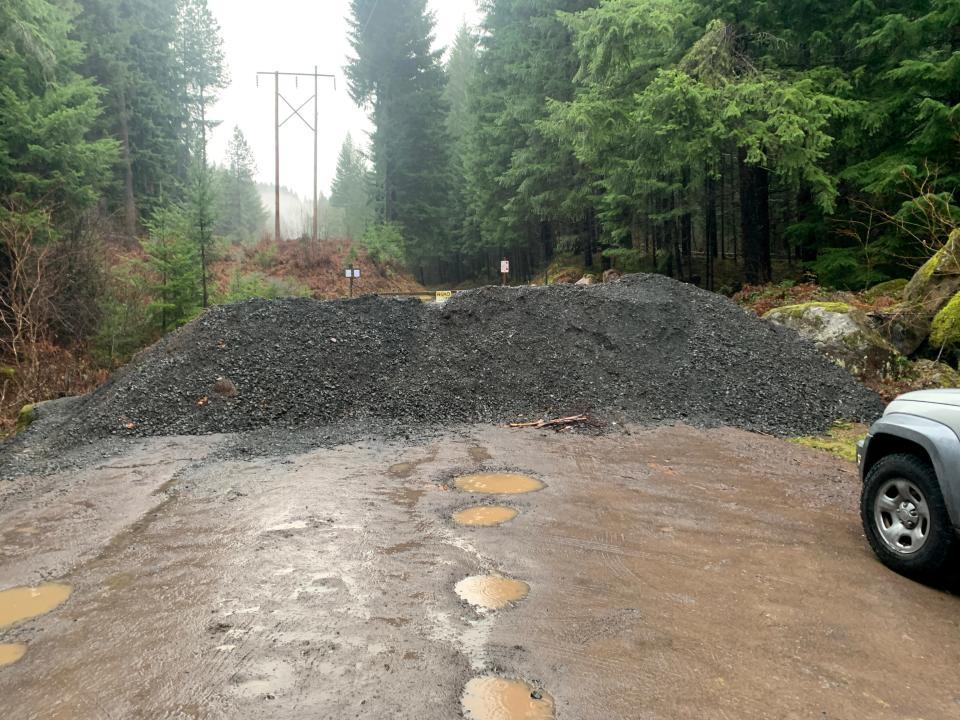
“It really is for public safety — the road is unplowed and when the gate gets broken open, people don’t know about the hazards, which has resulted in a huge uptick in vehicles getting stuck,” said Steve Marchi, a recreation and engineering staff officer for Umpqua National Forest. “That has become a big strain on county search and rescue teams. Recovering a car from the snow is a lengthy, expensive and dangerous process."
While the road is closed to vehicles, it's open to those on foot, bikes, skis or even a snowmobile. You just have to travel an extra 2.5 miles (5 miles round-trip) to reach the trailhead. From the trailhead, it’s another 0.25 miles to the hot springs.
That extra-effort required reduces the number of people visiting by about two-thirds, Marchi said.
That was music to my ears. I've been to Umpqua in the past for reporting, but never to soak.
And so, on a rainy day in late December, a friend and I decided to take bikes to visit Umpqua Hot Springs in its “quieter season.”
Journey to Umpqua Hot Springs Trailhead
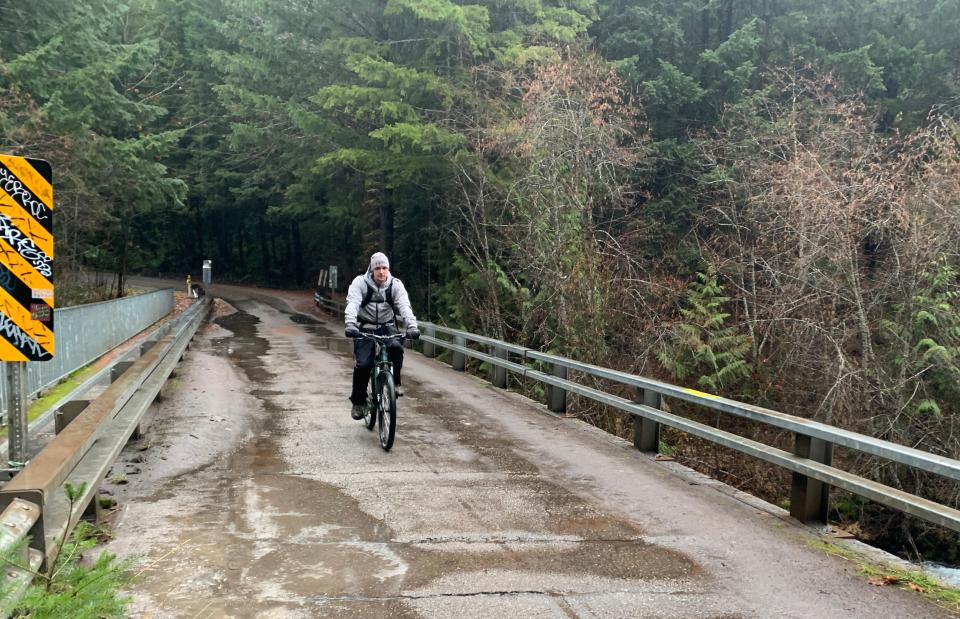
We arrived at the gate and gravel pile midweek, in the morning and in the middle of the rain. Even so, there was already a truck parked on the side of the road. It was a little disappointing, since we had visions of having the hot springs to ourselves. But that’s just rarely the case at Umpqua.
Snowpack in western Oregon was extremely low on our trip, so we were able to ride mountain bikes. Often this time of year, you’ll run into snow, and sometimes, you can’t even reach the gate because of it. It’s worth calling the Toketee or North Umpqua ranger stations for information on conditions.
Our mountain bikes proved a good choice in this case. The air was fresh and cold as we rode through green forest downhill to a bridge crossing over the North Umpqua. The bridge had slick patches of ice, leading to a skid-out and near fall.
From the bridge, the road rose back uphill, but in general, it was an easy grade for the 2.5 miles and soon we were riding into an empty trailhead parking lot.
A past of hostile groups and piles of poop
From the moment you arrive at Umpqua Hot Springs Trailhead, it becomes evident it’s a different kind of place. Every building is festooned with graffiti while the bridge over the river has been painted into a rainbow.
The first time I came here, I remember seeing a sign warning visitors that it was “clothing optional” and seeing nudity was “likely.”
So it’s always been a colorful place.
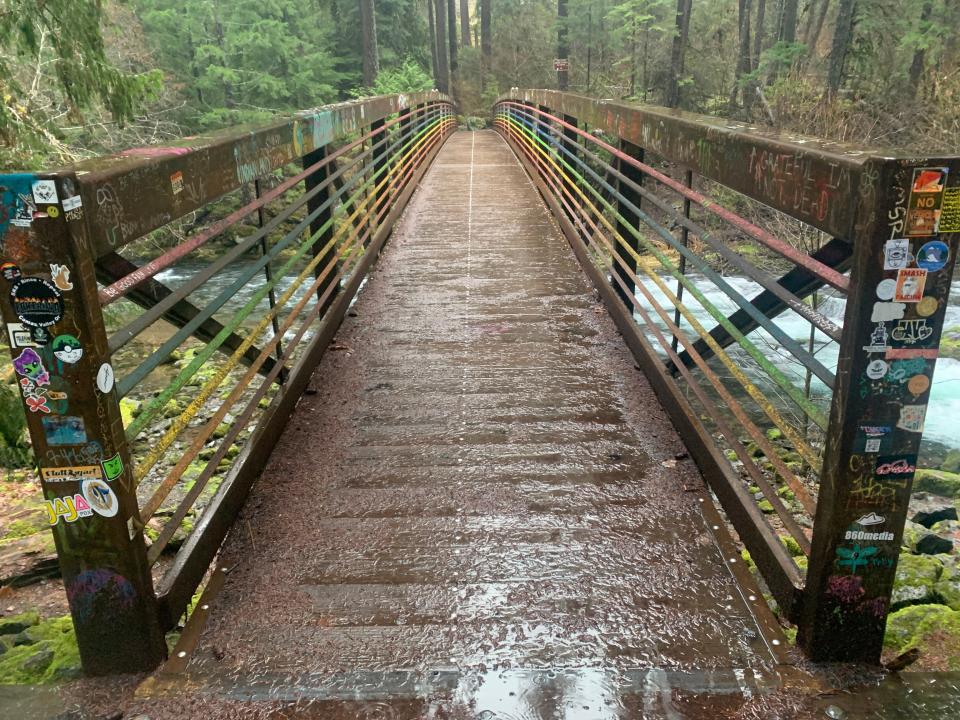
But at some point in the mid 2010s, it took a dark turn. Long-term campers left trash, cut down trees, had illegal campfires and left massive amounts of poop around the pools, former district ranger Jimmy Tyree told me in 2016. It got so bad that the hot springs were shut down for an extended period due to high levels of E. coli in the pools.
That didn't stop people from going or trying to fix the problem themselves — by dumping bleach into the pools. Which is, for the record, illegal.
Beyond the environmental destruction was story upon story of aggressive drug use and hostile groups that took over the hot springs, especially at night.
Molly Brady, who stopped to visit on a vacation, told me in 2016 that she had to deal with a group that had a “very Charles Manson sort of attitude."
“I didn't feel safe, my things didn't feel safe,” she said in an email. “Their ‘leader’ tried to get me and a friend to come travel with them. They were rude, obnoxious, disrespectful to women and others and the drug use at this site was nothing short of a crack house."
The issues prompted a ban on long-term camping near the hot springs, and that has helped with the issues, Marchi said. But there still are problems, as the vandalism of the gate suggests, and police visit the site regularly during summer.
“It's a challenging place to manage,” Marchi said. “I think the changes have improved the recreational experience, but it’s still a place we get a lot of calls about."
Return to the hot springs
I thought of those stories as we biked into the trailhead. We hid our bikes in the woods and locked them to a tree before hiking across the rainbow bridge toward the springs.
The trail is steep and muddy, traveling a quarter-mile, before you start seeing steam rising in the trees and the faint smell of sulfur.
It's quite a sight, to see these bathtub-size pools of hot water perched on the edge of the cliff, surrounded by lush forest. Once we arrived, we put on our bathing suits and slipped into the water. There was only one other person there, and he barely seemed aware of our arrival.
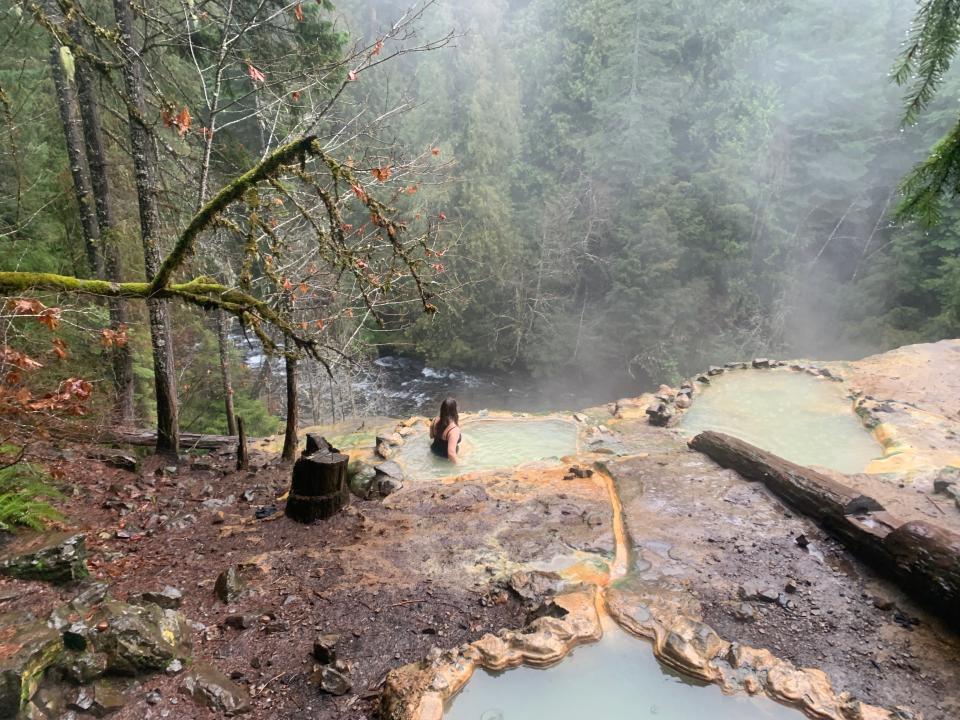
Strip away the issues, and the experience at Umpqua lives up to the hype. The pools are various sizes and temperatures, each offering something different. The warmth and scenery bring a feeling of deep relaxation so powerful it's easy to understand why some might want to claim it for themselves.
Eventually, other groups arrived. There was nudity, dogs and maybe the smell of marijuana, but that’s par for the course at any remote hot springs and everyone was friendly.
We stayed for about four hours before getting dressed and traveling the chilly road back to the gate and pile of gravel where we’d parked on the side of the road. It was nice to visit Umpqua Hot Springs to just enjoy it.
Notes from the Forest Service
The gate and rock berm will be removed and vehicle road closure lifted around April 30 or earlier.
Visitors should be aware that even if it is not snowy near the gate, often roads are icy or snowy further up the road to the hot springs. Additionally, if it is actively snowing, the trail can be hard to navigate for first time users. A compass, map or trail guide is suggested to help with wayfinding.
Visitors are encouraged to be prepared for adverse weather and winter road conditions when heading out to enjoy the winter beauty of the hot springs.
Temperatures at Umpqua Hot Springs range from 92-102 degrees Fahrenheit. With no trash cans and limited recreation staff in winter months, visitors are asked to practice Leave No Trace principles and pack out trash to keep the hot springs clean and natural.
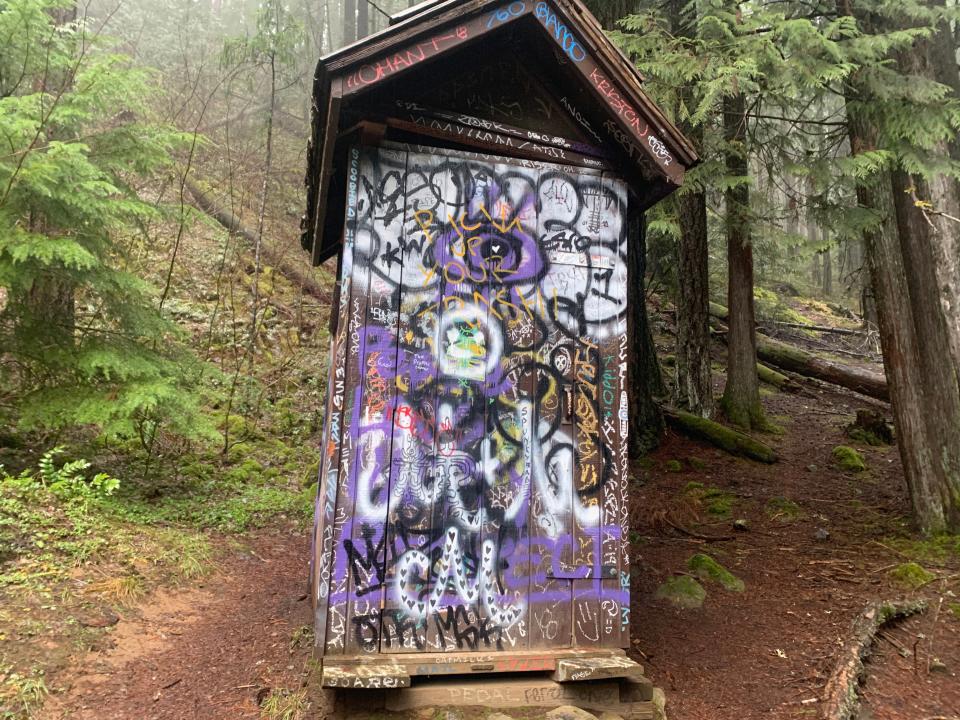
Zach Urness has been an outdoors reporter in Oregon for 15 years and is host of the Explore Oregon Podcast. Urness is the author of “Best Hikes with Kids: Oregon” and “Hiking Southern Oregon.” He can be reached at zurness@StatesmanJournal.com or (503) 399-6801. Find him on Twitter at @ZachsORoutdoors.
This article originally appeared on Salem Statesman Journal: Winter trek to Oregon's Umpqua Hot Springs offers quieter experience

